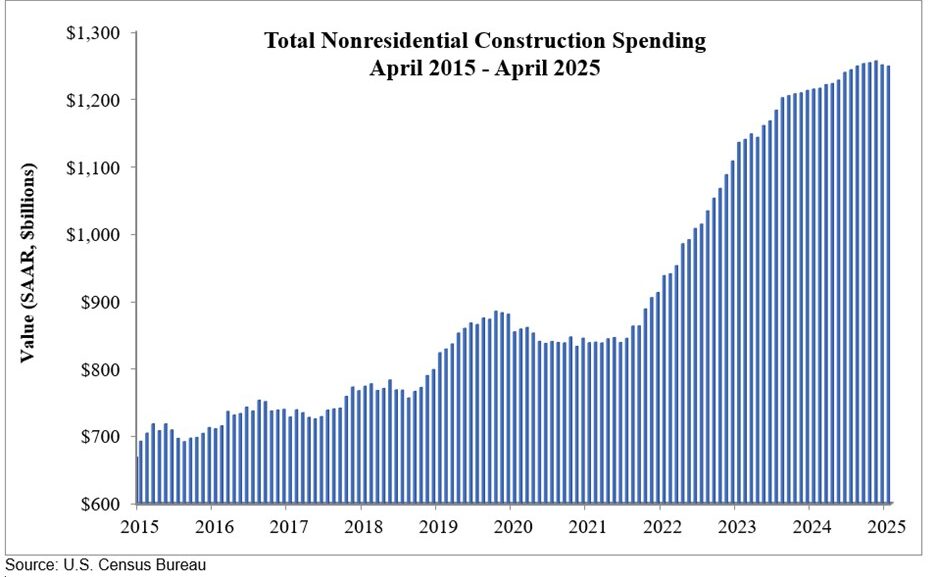Spending fell for the third consecutive month in April.
Graph courtesy of the U.S. Census Bureau
Overall construction spending fell 0.4% in April, compared to March, according to data released June 2 by the U.S. Census Bureau. Monthly non-residential construction spending fell 0.1%, while residential spending declined 0.9% in the same time period.
“Construction spending slipped in April as headwinds like trade policy uncertainty, high interest rates and tight lending standards continued to batter industrywide momentum,” said Anirban Basu, chief economist at Associated Builders and Contractors. “Nearly 22% of contractors reported tariff-related project delays or cancellations in April, and despite changes to certain import tax rates in May, policy uncertainty remains extraordinarily elevated.”
On a yearly basis, spending is down 0.5%, the first year-over-year decline since April 2019. While non-residential spending rose 2.8% overall, private non-residential spending rose by only 1%. The figure marks the lowest increase since July 2021, according to an analysis of the data by Associated General Contractors.
“A pullback in many types of private nonresidential projects, as well as a sharp drop in homebuilding, contributed to the latest drop in construction spending,” said Ken Simonson, chief economist of the Associated General Contractors of America, in a press release. “Ever-changing announcements about tariffs on key construction inputs, along with potential retaliatory measures by U.S. trading partners, are making owners hesitant to commit to new projects.”
Alisa Zevin is the economics editor for Engineering News-Record, covering economic issues within the construction industry, including construction economics and ENR’s quarterly cost reports. She is based in New York City.

